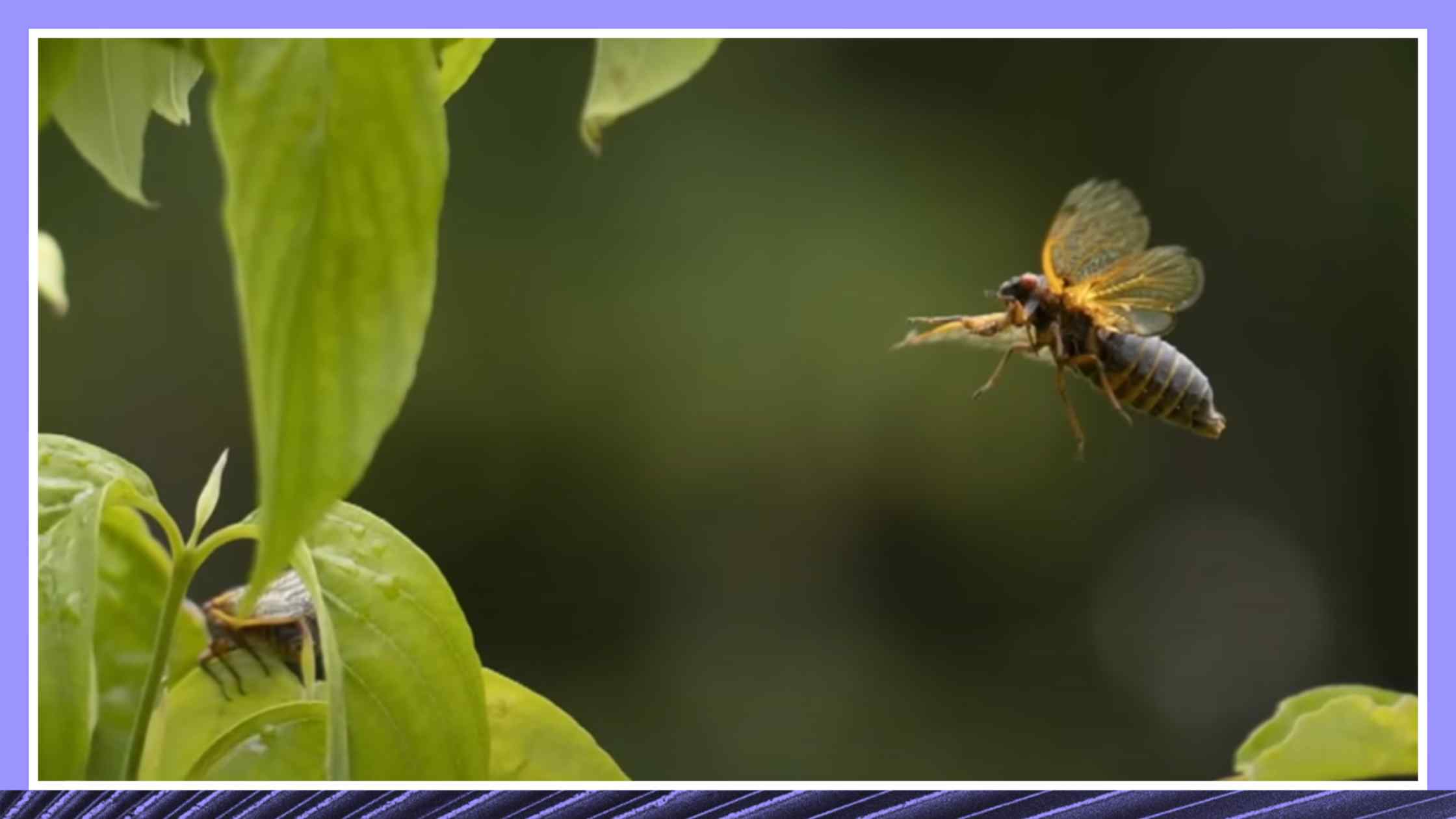Apr 8, 2024
Trillions of Cicadas About to Swarm the U.S.

Two different cicada broods will simultaneously emerge across the U.S. this spring for the first time since 1803. Read the transcript here.
Speaker 1 (00:05):
Spring is here, and soon the cicadas will be, too. More than a trillion of the loud insects will swarm parts of the US later this month. Two different cicada broods will simultaneously emerge from the ground for the first time since, get this, 1803. In all, about 16 states in the central and eastern US will be filled with the sound of cicadas. For more, we are joined now by Dr. Sammy Ramsey. He studies all things insects at the University of Colorado Boulder. It’s good to have you with us, Dr. Ramsey. So this is a-
Dr. Sammy Ramsey (00:37):
It’s absolutely great to be here.
Speaker 1 (00:37):
This is a rare double occurrence. Are you excited about this event? What will happen when all these insects emerge?
Dr. Sammy Ramsey (00:45):
Oh, I could not be more excited about this event. I mean this hasn’t happened since before the telegraph was invented, like before light bulbs were a thing. Now we’ve got smartphones. It’s a different world, and I think it’s going to be such an exciting experience.
Speaker 1 (00:59):
Well, tell us what regions will be most heavily impacted.
Dr. Sammy Ramsey (01:03):
So I’ve been seeing a lot online. People have been saying that these cicadas are going to swarm the entirety of the United States, and that’s not the case at all. It’ll be somewhere between 15 and 17 states that get to see any of the cicadas, and usually they’ll just see one of the two broods. So Brood XIII and Brood XIX are coming out of the ground. But there’s only really just two states where we’ll see both cicada broods at the same time. They’re going to get a double whammy, and you can believe I will be traveling to either Iowa or Illinois to get to see this in person.
Speaker 1 (01:37):
Oh, Iowa has wonderful cicadas. That brings up a good point, because some people like me actually love the sounds of cicadas. I associate them with carefree childhood summer days.
Dr. Sammy Ramsey (01:50):
Yes.
Speaker 1 (01:51):
It sounds like you’re pretty excited about them. I remember playing with their exoskeletons. Other people, I know, are creeped out that we’re even talking about this at all. So how should people prepare? Is this something you can prepare for?
Dr. Sammy Ramsey (02:05):
It’s not something that you need to prepare for. By the way, I’m really excited to have another cicada fan interviewing me, because usually the language that comes along with this is very panic-inducing. People are told they’re going to be swarmed by cicadas, that it’s going to be an invasion. I’ve even heard cicadapocalypse used. But they’re just not like that.
(02:23)
These bugs are coming out of the ground. They’ve spent 17 years under the ground just consistently waiting for this moment so that they can come above ground and sing this beautiful love song to attract a mate. At the end of the day, I like to think of it sort of like a rave. There’s going to be loud music and hormonal teenagers, but, at the end of the day, things are fine.
Speaker 1 (02:44):
And loud they certainly are. We just showed our viewers a graphic. I think it’s so interesting, if you compare the sound of cicadas to the sound of things like a jet engine or a police siren, they’re actually louder than a police siren and just a little bit quieter than a jet plane. How do they make that much noise?
Dr. Sammy Ramsey (03:04):
So they don’t actually make the noise the way that a lot of insects make noise. When we think about crickets and katydids making the noises that they make, they’re actually rubbing two parts of their bodies together. But the ways that cicadas actually make this noise, they have an organ inside of their body that they deform. You know, like the cap on an applesauce or a Snapple or something, it makes that popping noise when you deform it, they’re doing that, but at such a rapid rate that it creates this swell of noise all around them. Even though they’re much smaller than a jet engine, if you could bring them up to similar size, they would be able to rival that noise. And so, having all of them together really creates this entire symphony.
Speaker 1 (03:44):
I love how fascinating you have brought all this wonderful information to us. Dr. Sammy Ramsey, thank you.
Dr. Sammy Ramsey (03:51):
So glad to be here.
Transcribe Your Own Content
Try Rev and save time transcribing, captioning, and subtitling.



